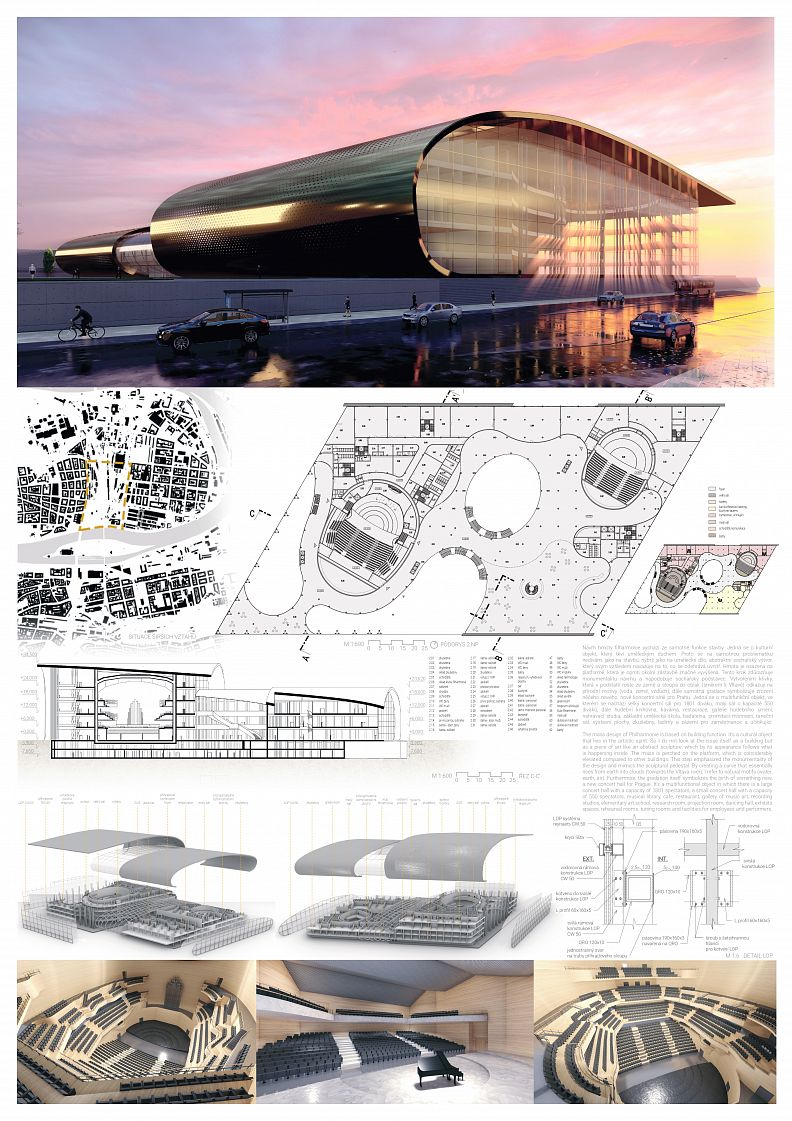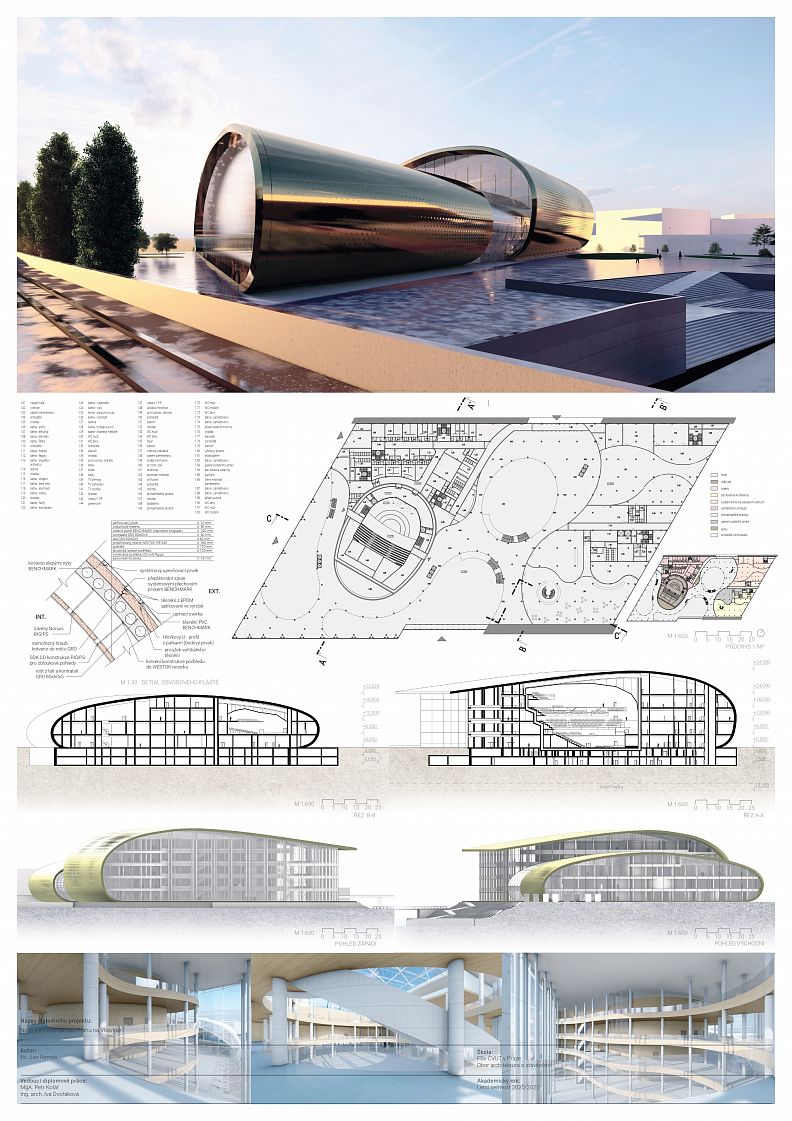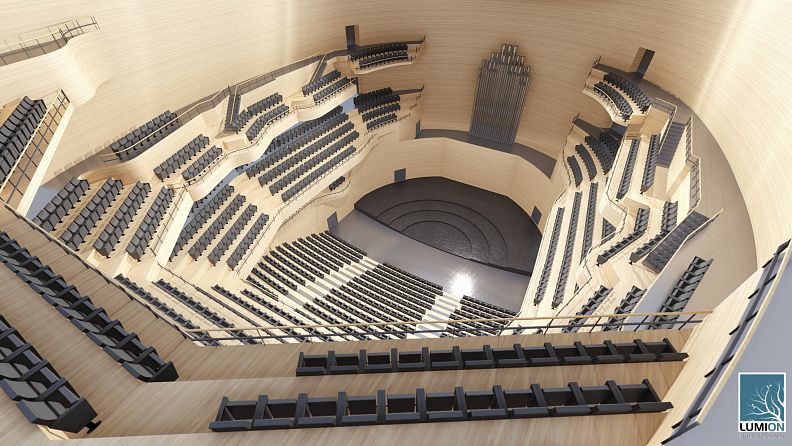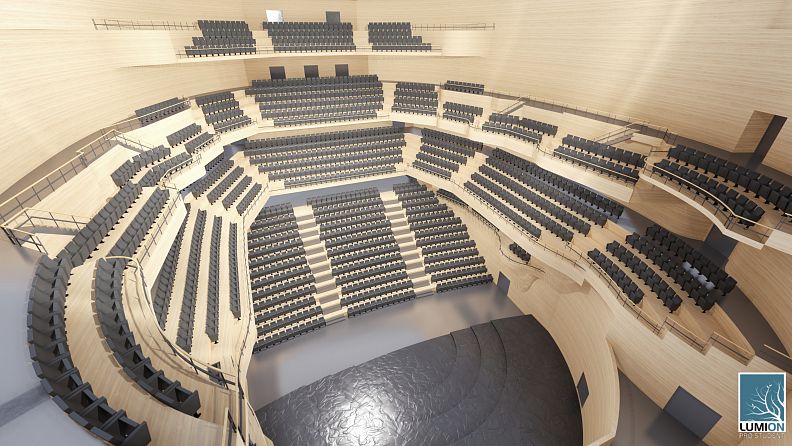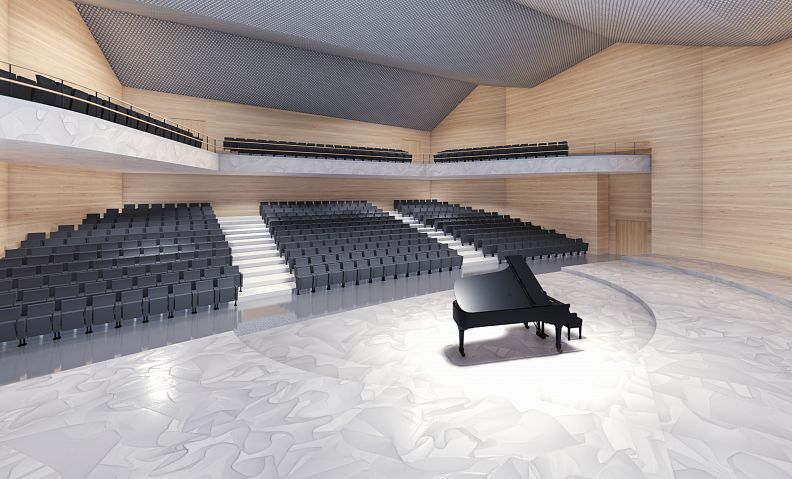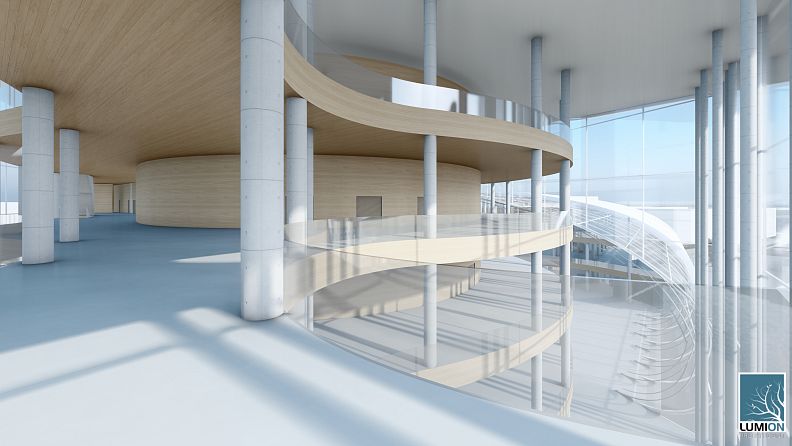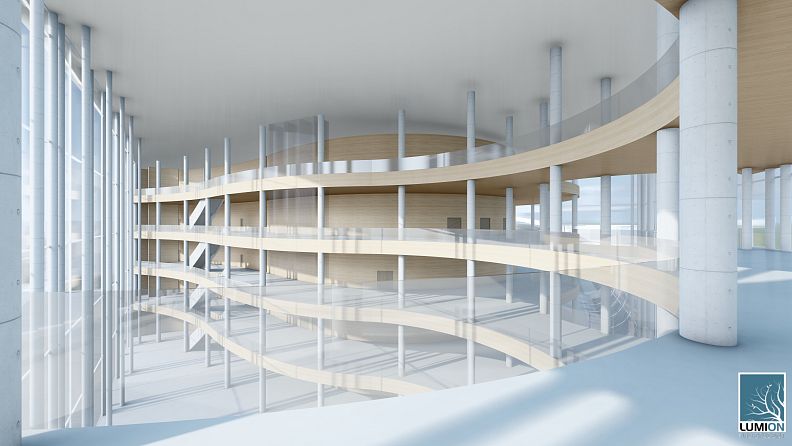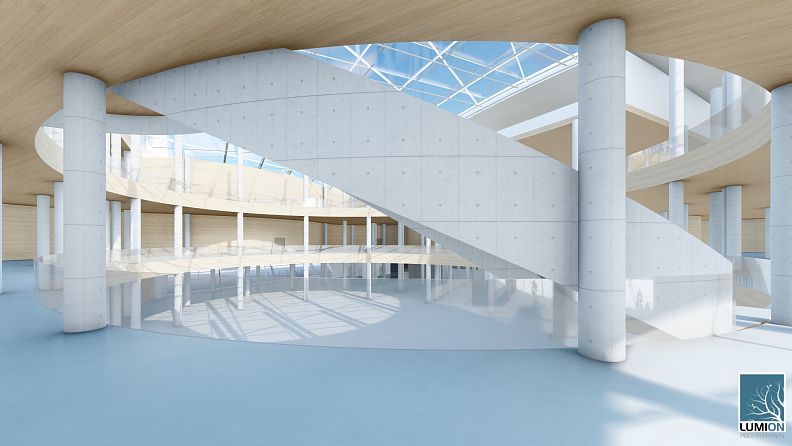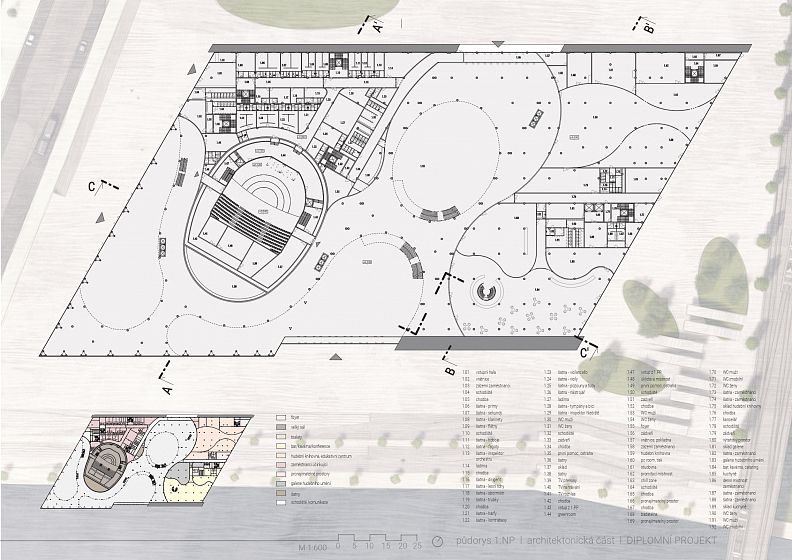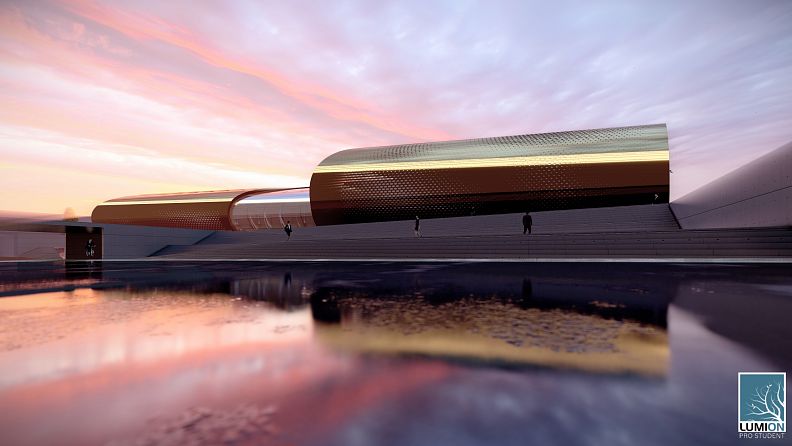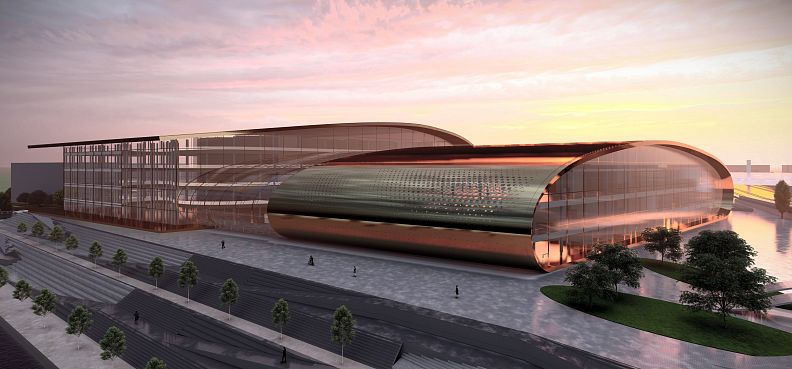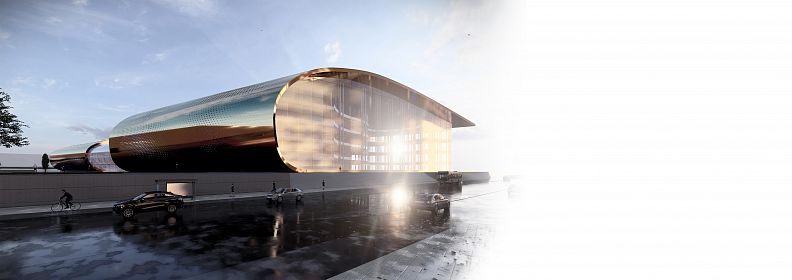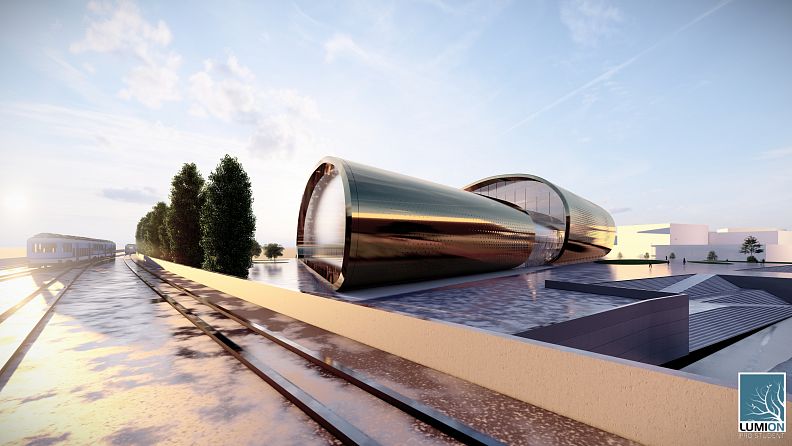New concert hall for Prague at Vltavská Street/ Nová koncertní síň pro Prahu na Vltavské

Project idea
The aim of the project was to design a new concert hall for Prague, which would be situated in the southern part of Holesovice at the place called brownfield Bubny-Zatory. The concert hall is adjoined by the river Vltava (on the south), Negrelli Viaduct (on the east) and Hlavkuv bridge (on the west), which demonstrates its connection to the surroundings.
This is a cultural building, which emanates with art and therefore it should be treated as such. When I was thinking about this structure, I realised that I cannot perceive it as architecture but more as artwork, which by its outer appearance mirrors what is happening inside. I have created an abstract sculpture placed on a platform (reminiscent of a pedestal) by using a simple curve, which ‘grows’ from the ground and continuously soars to the clouds in the direction of Vltava.
Project description
This structure is optically divided into three parts: left part five ground floors, the right part with four ground floors and finally a middle part with three ground floors. In addition to this the concert hall there are two lower ground floors. The main entrances are on the north, south and west side of the first GF. The first LGF includes a car park and a changing room for the performers whilst the second LGF contains a car park, technical base, storage, ramps for trucks and areas for arrivals of buses.
The left west part has a large auditorium which spreads across all five floors with a capacity of 1800 spectators. This left hand part also contains spaces for performers and employees, positioned on the first and second GF behind the large auditorium. The third GF has been devised for the use of the building management but it also includes rental spaces for administration and recording studios. Fourth and fifth GF host Primary Art School.
The middle part of the concert hall contains the third GF, whose primary function is an assembly point -a foyer- and it also comprises exhibition spaces and corridors that connect the left and right part of the building.
The right eastern part contains four GF. The first GF has been designed for visitors, consisting of a coffee shop, music library, education centre, and a gallery of musical art. Space for the performers is located behind the small auditorium. The third GF has a balcony leading to the small auditorium, behind which are positioned administration spaces. The third GF also contains a jazz bar and restaurant. The fourth GF serves as an engineering room and it also has cooling equipment and servers for the entire right part of the building.
Technical information
The whole building is based on a foundation slab, which is placed on drilled concrete pillars with a diameter of 900 millimeters. The specific diameters and lengths of the pillars will vary according to a detailed static calculation, which is not the subject of the assignment. As the building is located above the metro line C, it is taken into account to eliminate the downward load of the proposed building on the existing metro tube and vibrations from the underground, in this part the foundations will be bridged and subsequently connected to the foundation pillars.
Circular reinforced concrete columns with a diameter of 660 millimetres are designed as vertical load-bearing structures. The axial distances of the columns are a maximum of 8 metres. The walls of the stair cores are made of reinforced concrete with a thickness of 400 millimetres and form reinforcing cores. The walls of the large and small hall are also made of reinforced concrete with a thickness of 400 millimetres. Another vertical supporting element is trussed columns near curtain walls, which have a height of 24-30 metres and are estimated from three main pipes in the position of an equilateral triangle, axially spaced 1500 mm, the diameter of the main vertical pipes is considered 400 mm. In the middle part of the building, trussed columns are designed to ensure the roof structure of the middle part of the foyer, these trussed columns are also in the position of an equilateral triangle axially spaced 600 millimetres, their maximum height is 18 metres, the diameter of main pipes is 200 millimetres. In the part of the facade where the radius of the mass is visible are designed IPE beams WESTOK, which copy the organic shape of the mass and in the horizontal part above the large and small hall, they pass to trussed beams.
The horizontal construction is a cross-tensioned reinforced concrete slab of thickness 200 millimetres, placed on reinforced concrete beams, which are in both directions. The height of the beam is 500 millimetres to the lower edge of the reinforced concrete slab, the width of the beam is 660 millimetres due to the connection to the columns.
The horizontal structure of the roof above the large and small hall, also in the left, southern part of the building at the large hall are trussed beams in both directions, it is a spatial trussed structure in the form of a grate, which is placed on reinforced concrete columns and a small hall. A grate made of IPE beams is placed on the trussed structure, which is covered with Kingspan roof sandwich panels. In some parts, instead of trussed beams, perforated WESTOK beams are used again, due to smaller spans.

